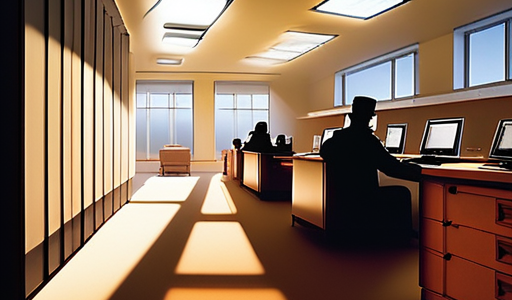A recent study found that 80% of companies used some form of monitoring software with remote workers, including tools that count keystrokes, take random shots of the workers through their computers’ cameras, and even monitor eye movements.
Amazon tracks employees’ “time on task” and “time off task” with draconian severity, in some cases leading to increased injuries as workers rush to avoid giving their handheld scanners the impression that they’re wasting time.
A Canadian company has deployed a mobile robot that trolls the offices measuring things like the temperature, the humidity, air quality including levels of methane or radon, light levels, and noise. Oh, and it also captures photos of the people present and counts them before deleting the images.
Has workplace surveillance gone too far?
Is workplace surveillance legal?
There is no right to privacy in the U.S. Constitution, and no general federal statutes forbidding workplace surveillance. As long as the employees are informed and the monitoring is done for bona fide business purposes, employers can monitor the use of all company-owned devices, set up surveillance cameras in most parts of the workplace, and record phone calls.
Some states have stricter rules. By and large, however, it’s a free-for-all. If you can prove that you have a valid business purpose for tracking people’s heart rates (as some companies did during the pandemic), you can do it. Cameras in the restroom are pretty much indefensible, but most electronic surveillance can be presented as a valid way to gather data for business purposes.
How do workers feel about it?
The numbers are clear:
- 83% feel it is an invasion of privacy
- 77% consider it spying
But workers’ behaviors also tell a story. Workers alter their behavior not just to avoid getting in trouble, but even just to mess with the data as a sort of revenge against what they see as spying.
They are more likely to experience burnout, less likely to trust their employers, and way more likely to quit.
Get over it?
Many workers today use wearable devices to track their own lives, from stress monitors to step counters. Many younger workers document their lives with selfies and social media posts. CCTV has become a normal part of life in countries like the UK, where according to some estimates the average person can expect to be filmed 70 times a day. By now, Brits say, nobody even notices it any more.
Workplace surveillance has become far more common since the pandemic, but in another decade or two workers might not be bothered by it.
If you are determined to use it…
Workplace surveillance has negatives, but I can also have positives. Monitoring air quality and noise levels is obviously a good thing for workers, and a rambling robot is a reasonable way to do it. Consider these steps to keep from running off workers:
- Clear communication of goals and strategies is essential. If your surveillance tools are intended to increase safety and productivity, make sure that workers don’t get the impression that you are using them to plan punishment or to snoop.
- Listen to the workers. If workers have a chance to ask questions and share misgivings, they may be more open to electronic monitoring.
- Stay in your lane. Limit surveillance to the data you actually need. If you’re trying to optimize lighting and heating automation, you’ll need to gather data about how people use the rooms. You don’t need to eavesdrop on their conversations in the break room.
- Keep data secure. Make sure that you know exactly who has access to the data you collect, how long is is stored, and how it is disposed of. Make sure your workers know this, too. Accountability will help increase comfort.
